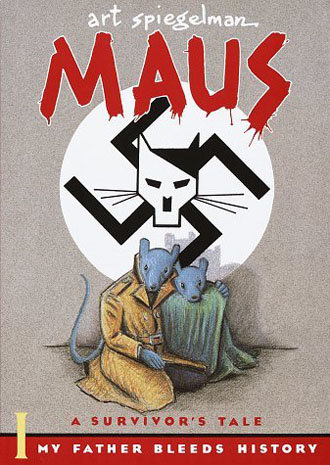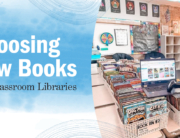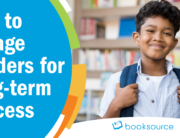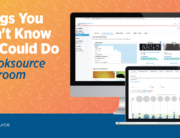By Kevin English, High School ELA Teacher
“I hate reading!” These were the very first words I heard from Stevi (names changed to protect students’ identities) this year. She insisted there was nothing I could do to get her to read. I took a deep breath and reassured her, as I do with every student, that she just hasn’t read the right book yet. She needed to give it time.
“Gateway Books” and “Test Driving”
Just last week I caught Stevi sitting in front of a shelf, examining a stack of books she was thinking about reading. For this student, Drama, a graphic novel by Raina Telgemeier, made all the difference. It was what I consider a “gateway book.” It provided a desperately needed feeling of success, making Stevi more confident and willing to read in the future.
I remind students that it’s okay to “test drive” books. Struggling readers need to know that not every book is a good fit. Independent readers have years of experience with quitting books, so I try to provide a flexible, supportive environment to encourage them to take these risks. Failure never feels good, so we have to provide the necessary support to help them overcome the negative voices in their heads.
A week later, I attempted to squash a conversation between Stevi and her friend during Sacred Reading Time. When I approached them, Stevi responded, “We just noticed we read a book by the same author! We’re going to trade books. Is that okay?” I couldn’t help but smile. Not only was Stevi building reading preferences, she had added a dimension to her a friendship and found someone she could talk to about books. These readerly conversations make my heart palpitate.
Encouraging Students to Discover New Texts
David, on the other hand, is an avid reader and devoured Art Spiegelman’s Maus. A s elf-proclaimed history buff, David boasts his preference for traditional non-fiction. Books that would typically make others fall asleep are some of David’s first choices. So a graphic novel rife with symbolism wasn’t what he was in the market for, but he was able to stretch his thinking in new ways by sitting down with this complex text. Since then, I’ve noticed David venturing back from the library with stacks of Naruto. I haven’t read this series, but I know that it’s manga. David’s exposure to a graphic novel helped him expand his literary repertoire and read outside his comfort zone.
elf-proclaimed history buff, David boasts his preference for traditional non-fiction. Books that would typically make others fall asleep are some of David’s first choices. So a graphic novel rife with symbolism wasn’t what he was in the market for, but he was able to stretch his thinking in new ways by sitting down with this complex text. Since then, I’ve noticed David venturing back from the library with stacks of Naruto. I haven’t read this series, but I know that it’s manga. David’s exposure to a graphic novel helped him expand his literary repertoire and read outside his comfort zone.
I recently had a student who returned from the school library with cookbooks. Were they necessarily what I wanted her to read? No. But as a reader, she was making independent choices. During our conference, I learned that her guardian was recently diagnosed with a metabolic condition. She decided that she wanted to learn about healthy meals she could prepare for him. Her guardian’s life had changed, and she was making sense of that change through reading. By having the freedom to choose, she is developing a sense of efficacy and authority in making her own decisions as a reader, and that will allow her to continue to thrive. It’s also helping her rethink what a “text” means in the English classroom.
Were they necessarily what I wanted her to read? No. But as a reader, she was making independent choices. During our conference, I learned that her guardian was recently diagnosed with a metabolic condition. She decided that she wanted to learn about healthy meals she could prepare for him. Her guardian’s life had changed, and she was making sense of that change through reading. By having the freedom to choose, she is developing a sense of efficacy and authority in making her own decisions as a reader, and that will allow her to continue to thrive. It’s also helping her rethink what a “text” means in the English classroom.
Keeping Students Hooked
Another student hoards books for quite some time. She won’t return the first stack until I provide her with another. Through all this extensive reading, she has developed strong preferences. She won’t go near anything with a Scholastic label or yellowed pages, and she thrives on realistic fiction in which she can see herself. If I’m to keep her hooked, I have to keep adding a steady stream of new titles to my library.
A freshman poses a different challenge. In her writer’s-reader’s notebook, she collects ideas for writing inspiration from nearly everything she reads. She’s dabbled with iambic pentameter, spoken word poetry, short stories and seeds for larger pieces. So I know that I have to push her to consider new texts, genres and styles that she wouldn’t stumble upon ordinarily.
Plans for Future Reading
I’ve had to work to find ways to mediate all students’ past experiences with books, and one of my favorite lessons is to teach students how to shop for them. We use Amazon, What Should I Read Next, Your Next Read, GNooks and GoodReads. I dedicate time in class for students to plan their next reads. This helps all students. Some are able to discover additional authors that they may have never considered before, and students who don’t have fully developed reading identities are nudged in the direction of possibilities.
I think there’s one thing we have to remember about our work to “hook” all readers: sometimes it doesn’t have immediate results. But that doesn’t mean students aren’t listening! Give them the freedom to choose, the flexibility to fail and frequent recommendations. They’ll get there!
Kevin English is a high school English language arts teacher at Wayne Memorial High School in Wayne, Michigan. He’s a teacher consultant for the Eastern Michigan Writing Project, and he actively tweets @KevinMEnglish. When he isn’t teaching, he’s reading. Just ask his students. When he shows up to an after-school activity, he always has a book in hand. He is currently finishing Stephanie Kuehn’s Charm & Strange. If you haven’t read Matthew Quick’s Forgive Me, Leonard Peacock, you need to drop everything you’re doing and get it right away. You won’t regret it, and you’ll seriously rethink the importance of pancakes.








Leave A Comment